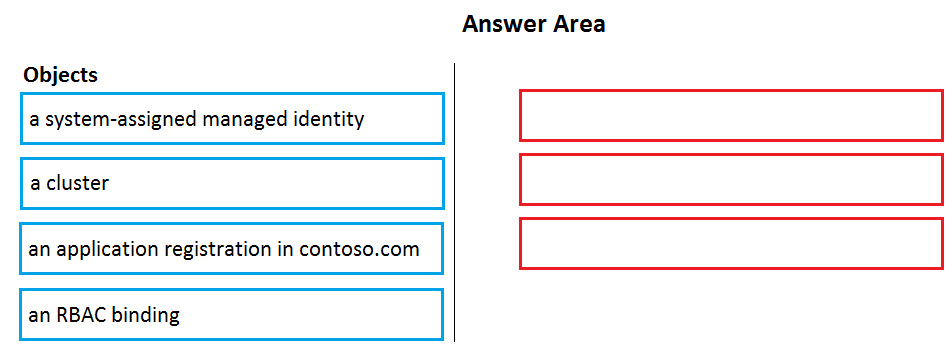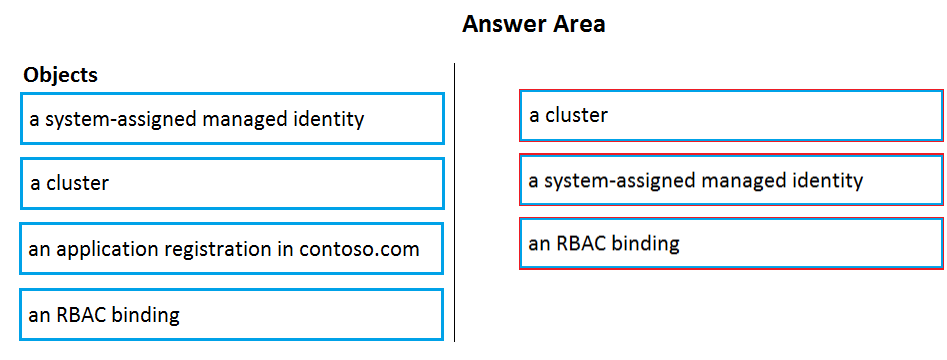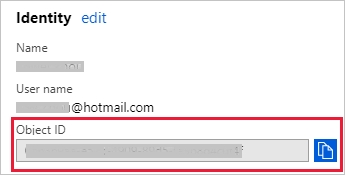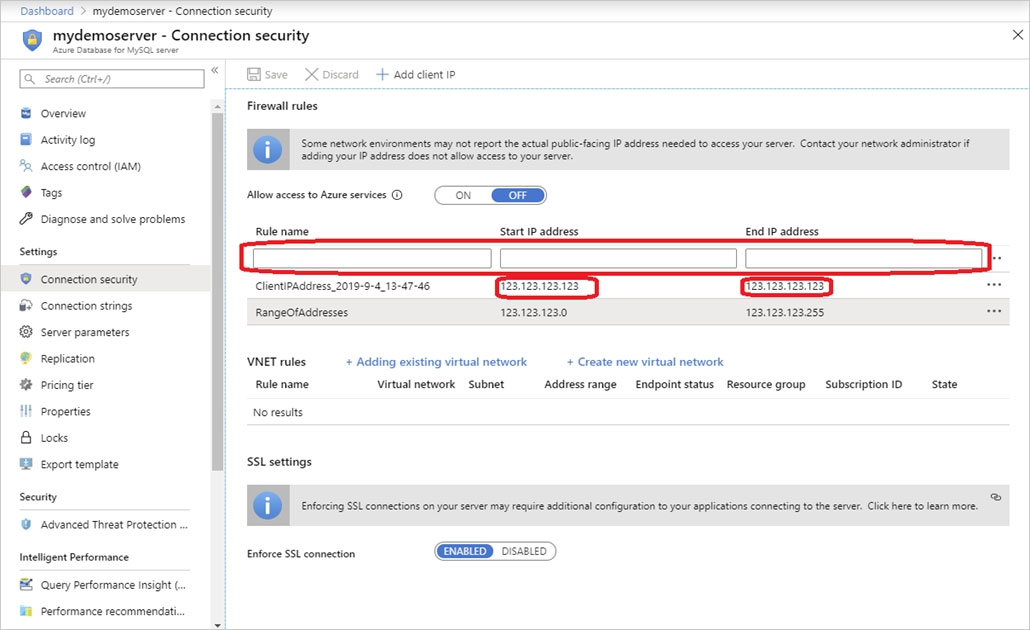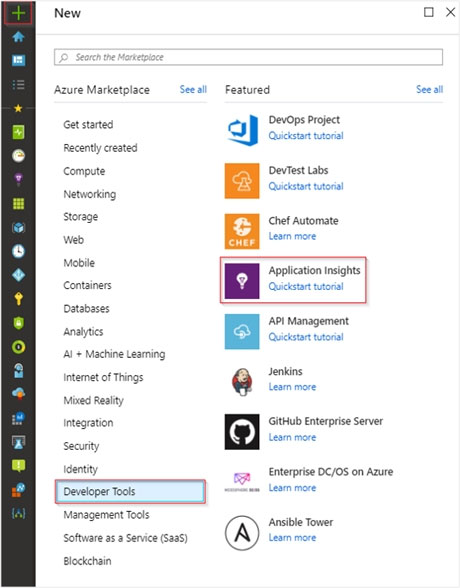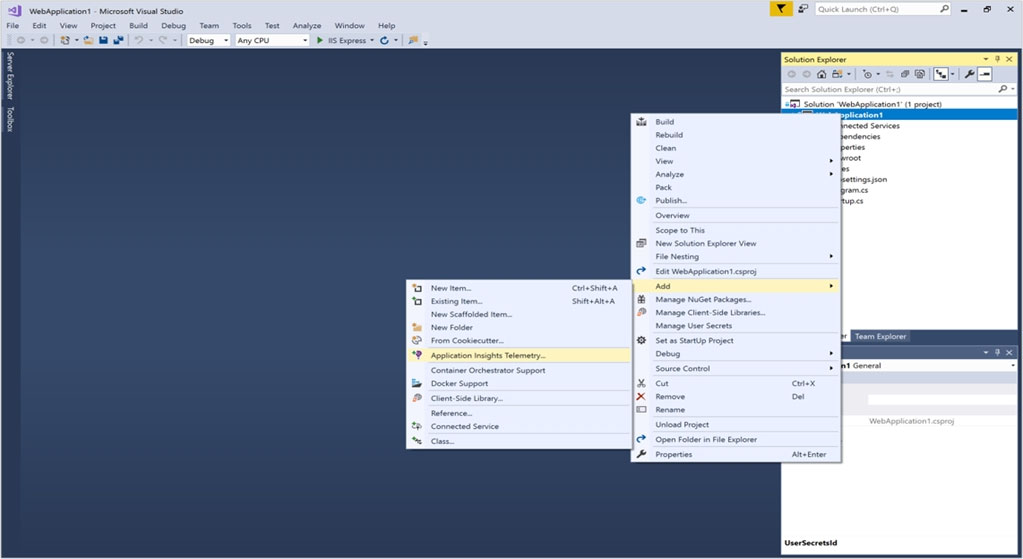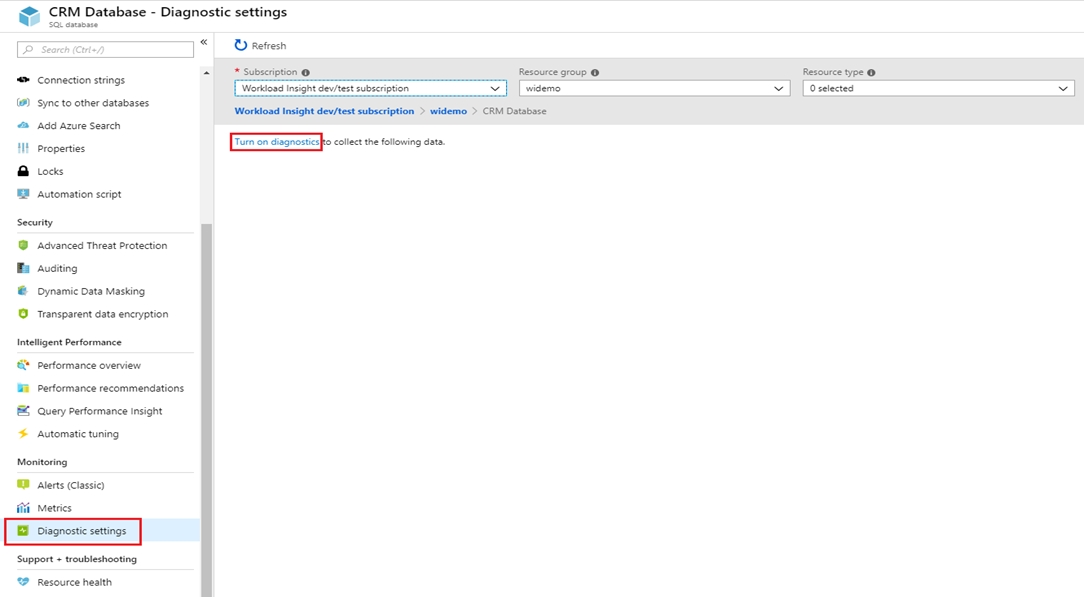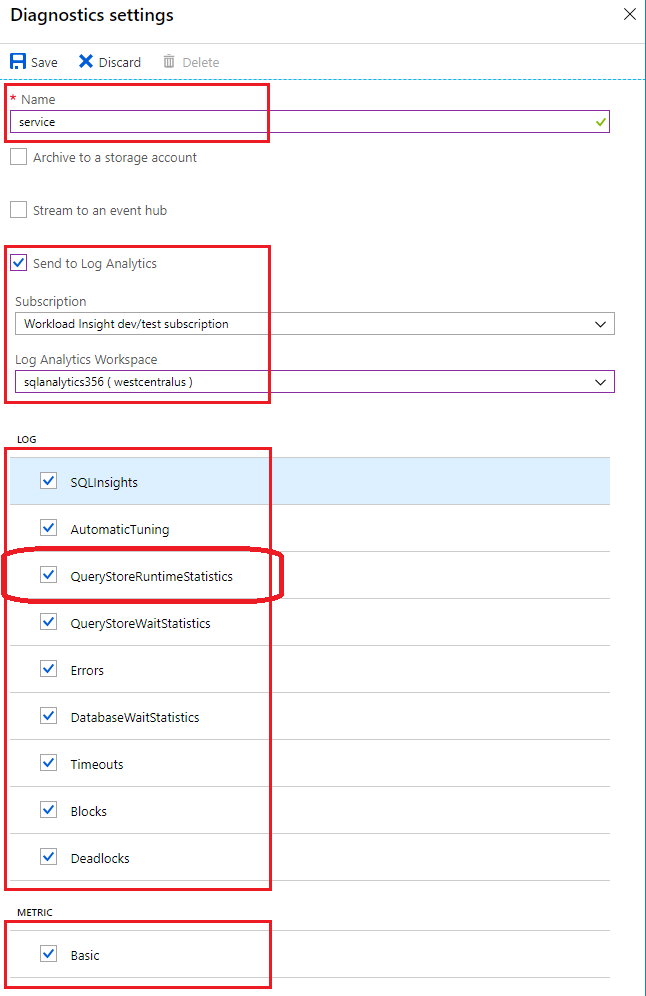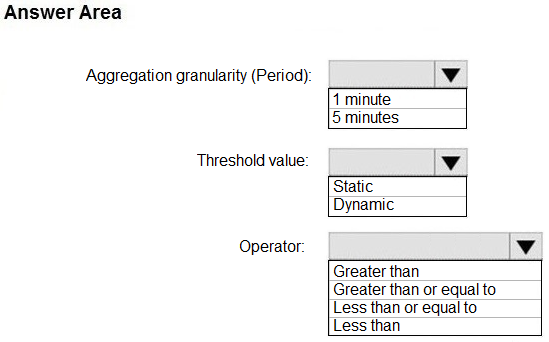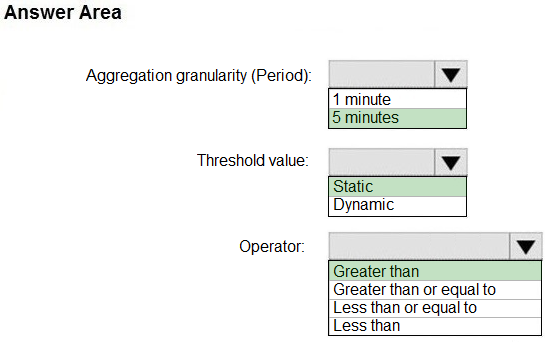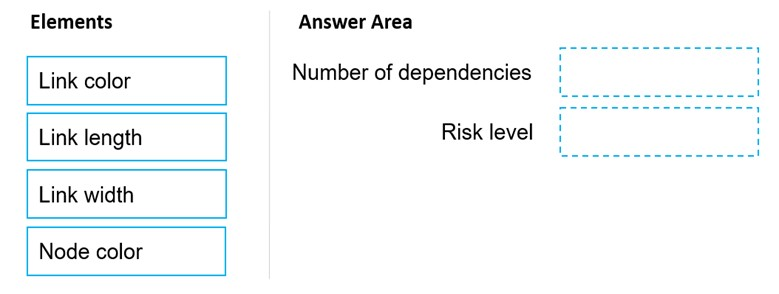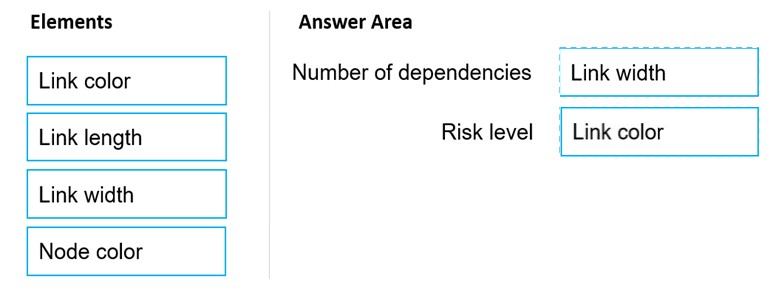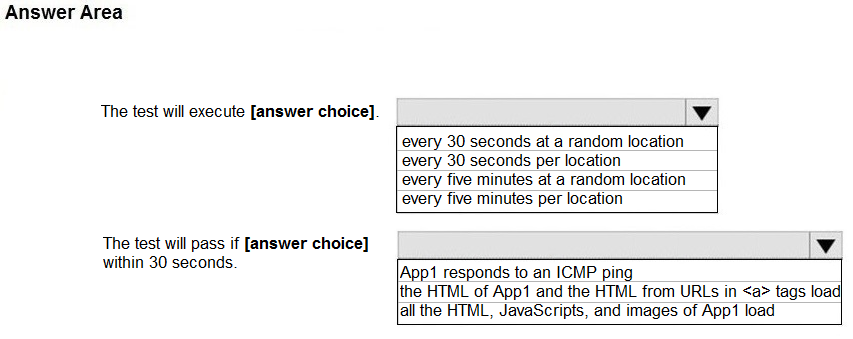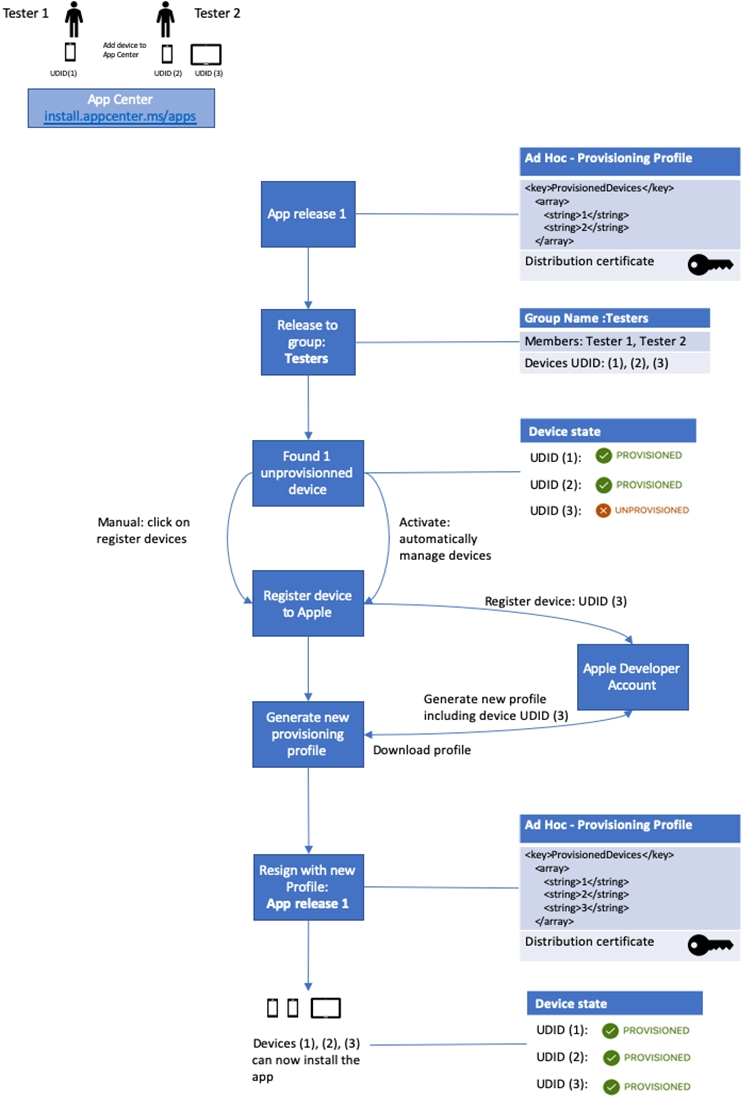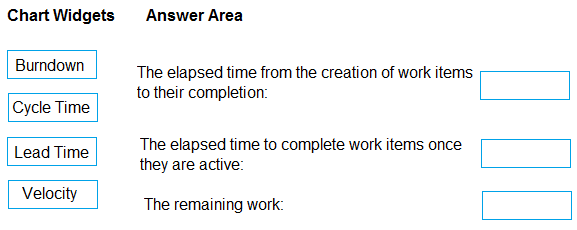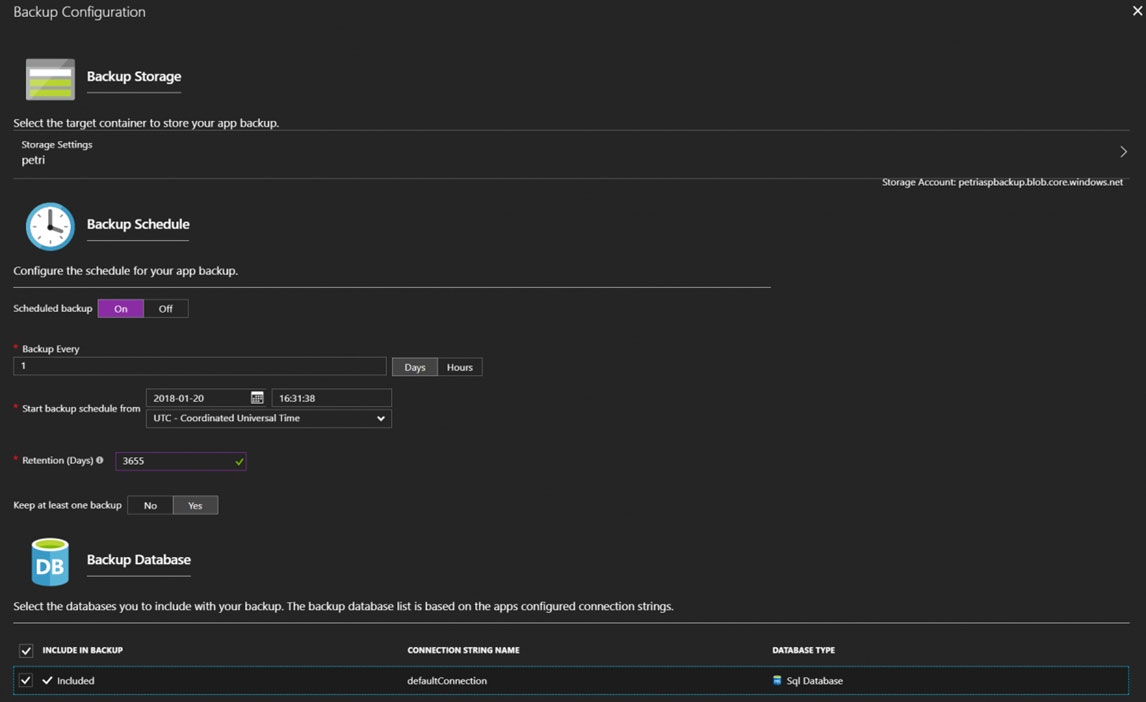AZ-400 Exam Prep Free – 50 Practice Questions to Get You Ready for Exam Day
Getting ready for the AZ-400 certification? Our AZ-400 Exam Prep Free resource includes 50 exam-style questions designed to help you practice effectively and feel confident on test day
Effective AZ-400 exam prep free is the key to success. With our free practice questions, you can:
- Get familiar with exam format and question style
- Identify which topics you’ve mastered—and which need more review
- Boost your confidence and reduce exam anxiety
Below, you will find 50 realistic AZ-400 Exam Prep Free questions that cover key exam topics. These questions are designed to reflect the structure and challenge level of the actual exam, making them perfect for your study routine.
DRAG DROP - Your company has an Azure subscription named Subscription1. Subscription1 is associated to an Azure Active Directory tenant named contoso.com. You need to provision an Azure Kubernetes Services (AKS) cluster in Subscription1 and set the permissions for the cluster by using RBAC roles that reference the identities in contoso.com. Which three objects should you create in sequence? To answer, move the appropriate objects from the list of objects to the answer area and arrange them in the correct order. Select and Place:
You have an Azure DevOps organization named Contoso. You need to receive Microsoft Teams notifications when work items are updated. What should you do?
A. From Azure DevOps, configure a service hook subscription
B. From Microsoft Teams, configure a connector
C. From the Microsoft Teams admin center, configure external access
D. From Microsoft Teams, add a channel
E. From Azure DevOps, install an extension
You need to consider the underlined segment to establish whether it is accurate. To deploy an application to a number of Azure virtual machines, you should create a universal group. Select `No adjustment required` if the underlined segment is accurate. If the underlined segment is inaccurate, select the accurate option.
A. No adjustment required.
B. security
C. deployment
D. resource
You are making use of Azure DevOps manage build pipelines, and also deploy pipelines. The development team is quite large, and is regularly added to. You have been informed that the management of users and licenses must be automated when it can be. Which of the following is a task that can't be automated?
A. Group membership changes
B. License assignment
C. Assigning entitlements
D. License procurement
You have an Azure subscription linked to an Azure Active Directory Premium Plan 1 tenant. A security review indicates that too many users have privileged access to resources. You need to deploy a privileged access management solution that meets the following requirements: • Enforces time limits on the use of privileged access • Requires approval to activate privileged access • Minimizes costs What should you do first?
A. Configure notifications when privileged roles are activated.
B. Configure alerts for the activation of privileged roles.
C. Enforce Azure Multi-Factor Authentication (MFA) for role activation.
D. Upgrade the license of the Azure Active Directory (Azure AD) tenant.
You are integrating Azure Pipelines and Microsoft Teams. You install the Azure Pipelines app in Microsoft Teams. You have an Azure DevOps organization named Contoso that contains a project name Project1. You subscribe to Project1 in Microsoft Teams. You need to ensure that you only receive events about failed builds in Microsoft Teams. What should you do first?
A. From Microsoft Teams, run @azure pipelines subscribe https://dev.azure.com/Contoso/Project1.
B. From Azure Pipelines, add a Publish Build Artifacts task to Project1.
C. From Microsoft Teams, run @azure pipelines subscriptions.
D. From Azure Pipelines, enable continuous integration for Project1.
Note: This question is part of a series of questions that present the same scenario. Each question in the series contains a unique solution that might meet the stated goals. Some question sets might have more than one correct solution, while others might not have a correct solution. After you answer a question in this section, you will NOT be able to return to it. As a result, these questions will not appear in the review screen. You plan to create a release pipeline that will deploy Azure resources by using Azure Resource Manager templates. The release pipeline will create the following resources: ✑ Two resource groups ✑ Four Azure virtual machines in one resource group ✑ Two Azure SQL databases in other resource group You need to recommend a solution to deploy the resources. Solution: Create two standalone templates, each of which will deploy the resources in its respective group. Does this meet the goal?
A. Yes
B. No
Note: This question is part of a series of questions that present the same scenario. Each question in the series contains a unique solution that might meet the stated goals. Some question sets might have more than one correct solution, while others might not have a correct solution. After you answer a question in this section, you will NOT be able to return to it. As a result, these questions will not appear in the review screen. You plan to create a release pipeline that will deploy Azure resources by using Azure Resource Manager templates. The release pipeline will create the following resources: ✑ Two resource groups ✑ Four Azure virtual machines in one resource group ✑ Two Azure SQL databases in other resource group You need to recommend a solution to deploy the resources. Solution: Create a single standalone template that will deploy all the resources. Does this meet the goal?
A. Yes
B. No
You have an Azure web app that is deployed by using Azure Pipelines. You need to ensure that when a new version of the app is deployed to production, you can roll back to the previous version. The solution must meet the following requirements: • Minimize downtime during the deployment. • Minimize the time it takes for the rollback. What should you use?
A. a single web app and two deployment slots
B. a single web app and two deployment pipelines
C. two web apps and an Azure Standard Load Balancer
D. two web apps and an Azure Traffic Manager instance
You use Azure Pipelines to manage build pipelines, GitHub to store source code, and Dependabot to manage dependencies. You have an app named App1. Dependabot detects a dependency in App1 that requires an update. What should you do first to apply the update?
A. Create a pull request.
B. Approve the pull request.
C. Create a branch.
D. Perform a commit.
SIMULATION - You plan to add a new web farm that will be published by using an IP address of 10.0.0.5. You need to allow traffic from the web farm to an Azure Database for MySQL server named az400-123456789-mysql. To complete this task, sign in to the Microsoft Azure portal.
Your company uses Azure DevOps for the build pipelines and deployment pipelines of Java-based projects. You need to recommend a strategy for managing technical debt. Which two actions should you include in the recommendation? Each correct answer presents part of the solution. NOTE: Each correct selection is worth one point.
A. Configure post-deployment approvals in the deployment pipeline.
B. Configure pre-deployment approvals in the deployment pipeline.
C. Integrate Azure DevOps and SonarQube.
D. Integrate Azure DevOps and Azure DevTest Labs.
SIMULATION - You need to create an instance of Azure Application Insights named az400-123456789-main and configure the instance to receive telemetry data from an Azure web app named az400-123456789-main. To complete this task, sign in to the Microsoft Azure portal.
HOTSPOT - You have a management group that contains four Azure subscriptions. Each subscription contains four resource groups. You develop a new web app named App1. You plan to deploy an instance of App1 to each resource group. You need to create a Bicep template that will be used to deploy App1. The solution must meet the following requirements: • The name of each App1 instance must be consistent for each subscription and resource group. • The name of each App Service plan used to host App1 must be consistent. How should you complete the template? To answer, select the appropriate options in the answer area. NOTE: Each correct selection is worth one point.
You need to consider the underlined segment to establish whether it is accurate. Your company has a multi-tier application that has its front end hosted in Azure App Service. To pinpoint the average load times of the application pages, you should make use of Azure Event Hubs. Select `No adjustment required` if the underlined segment is accurate. If the underlined segment is inaccurate, select the accurate option.
A. No adjustment required.
B. Azure Application Insights
C. Azure Log Analytics
D. Azure Advisor
You use GitHub for source control. You are evaluating whether to use proxying to add a private upstream MyGet package feed to your MyGet feed. What are two possible advantages of this approach? Each correct answer presents a complete solution. NOTE: Each correct selection is worth one point.
A. minimizes the impact of upstream source availability issues
B. minimizes latency when accessing the package
C. provides automatic authentication
D. minimizes the impact on your storage quota
SIMULATION - You have a web app that connects to an Azure SQL Database named db1. You need to configure db1 to send Query Store runtime statistics to Azure Log Analytics. To complete this task, sign in to the Microsoft Azure portal.
You have an Azure DevOps organization named Contoso, an Azure DevOps project named Project1, an Azure subscription named Sub1, and an Azure key vault named vault1. You need to ensure that you can reference the values of the secrets stored in vault1 in all the pipelines of Project1. The solution must prevent the values from being stored in the pipelines. What should you do?
A. Create a variable group in Project1.
B. Add a secure file to Project1.
C. Modify the security settings of the pipelines.
D. Configure the security policy of Contoso.
You plan to onboard 10 new developers. You need to recommend a development environment that meets the following requirements: ✑ Integrates with GitHub ✑ Provides integrated debugging tools ✑ Supports remote workers and hot-desking environments ✑ Supports developers who use browsers, tablets, and Chromebooks What should you recommend?
A. VS Code
B. Xamarin Studio
C. MonoDevelop
D. Github Codespaces
You manage a project by using Azure Boards. You manage the project code by using GitHub. You have three work items that have IDs of 456, 457, and 458. You need to create a pull request that will be linked to all the work items. The solution must set the state of work item 456 to done. What should you add to the commit message?
A. Fixes #456, #457, #458
B. Fixes #AB456, #AB457, #AB458
C. #456, #457, #458Completed #456
D. #AB456, #AB457, #AB458
You run the Register-AzureRmAutomationDscNode command in your company's environment. You need to make sure that your company's test servers remain correctly configured, regardless of configuration drift. Solution: You set the -ConfigurationMode parameter to ApplyOnly. Does the solution meet the goal?
A. Yes
B. No
You manage build pipelines and deployment pipelines by using Azure DevOps. Your company has a team of 500 developers. New members are added continually to the team. You need to automate the management of users and licenses whenever possible. Which task must you perform manually?
A. modifying group memberships
B. adding users
C. assigning entitlements
D. procuring licenses
HOTSPOT - You use Azure DevOps to manage the build and deployment of an app named App1. You have a release pipeline that deploys a virtual machine named VM1. You plan to monitor the release pipeline by using Azure Monitor. You need to create an alert to monitor the performance of VM1. The alert must be triggered when the average CPU usage exceeds 70 percent for five minutes. The alert must calculate the average once every minute. How should you configure the alert rule? To answer, select the appropriate options in the answer area. NOTE: Each correct selection is worth one point. Hot Area:
DRAG DROP - You are using the Dependency Tracker extension in a project in Azure DevOps. You generate a risk graph for the project. What should you use in the risk graph to identify the number of dependencies and the risk level of the project? To answer, drag the appropriate elements to the correct data points. Each element may be used once, more than once, or not at all. You may need to drag the split bar between panes or scroll to view content. NOTE: Each correct selection is worth one point. Select and Place:
Note: This question is part of a series of questions that present the same scenario. Each question in the series contains a unique solution that might meet the stated goals. Some question sets might have more than one correct solution, while others might not have a correct solution. After you answer a question in this section, you will NOT be able to return to it. As a result, these questions will not appear in the review screen. You manage a project in Azure DevOps. You need to prevent the configuration of the project from changing over time. Solution: Perform a Subscription Health scan when packages are created. Does this meet the goal?
A. Yes
B. No
HOTSPOT - You have an application named App1 that has a custom domain of app.contoso.com. You create a test in Azure Application Insights as shown in the following exhibit.Use the drop-down menus to select the answer choice that completes each statement based on the information presented in the graphic. NOTE: Each correct selection is worth one point. Hot Area:
You have a private distribution group that contains provisioned and unprovisioned devices. You need to distribute a new iOS application to the distribution group by using Microsoft Visual Studio App Center. What should you do?
A. Select Register devices and sign my app.
B. Create an active subscription in App Center Test.
C. Create an unsigned build.
D. Add the device owner to the collaborators group.
DRAG DROP - You need to recommend project metrics for dashboards in Azure DevOps. Which chart widgets should you recommend for each metric? To answer, drag the appropriate chart widgets to the correct metrics. Each chart widget may be used once, more than once, or not at all. You may need to drag the split bar between panes or scroll to view content. NOTE: Each correct selection is worth one point. Select and Place:
You configure an Azure Application Insights availability test. You need to notify the customer services department at your company by email when availability is degraded. You create an Azure logic app that will handle the email and follow up actions. Which type of trigger should you use to invoke the logic app?
A. an HTTPWebhook trigger
B. an HTTP trigger
C. a Request trigger
D. an ApiConnection trigger
You have an Azure subscription that contains an Azure Kubernetes Service (AKS) instance named AKS1. You collect and analyze metrics for AKS1 by using the Azure Monitor managed service for Prometheus. You need to analyze the performance of AKS1. Which query language should you use?
A. PL/SQL
B. PromQL
C. SparkQL
D. KQL
You manage projects by using Azure Boards. You have a current work item named itemA that is dependent on a work item named itemB. You need to define the dependency for itemA. What should you do in the web portal for Azure DevOps?
A. Add a Parent link to the user story of itemA.
B. From Backlogs, open the context menu, select Add link, and then select itemA. Set Link type to Successor and add the ID of itemB.
C. From Backlogs, open the context menu, select Add link, and then select itemB. Set Link type to Related and add the ID of itemA.
D. From itemA, open the Links tab, and then select Add link. Set Link type to References and add the ID of itemB.
DRAG DROP - You have a GitHub repository. You need to configure Dependabot dependency scanning. The solution must meet the following requirements: • Automatically open a pull request to resolve an alert. • Automatically open a pull request when a dependency is updated. What should you enable for each requirement? To answer, drag the appropriate features to the correct requirements. Each feature may be used once, more than once, or not at all. You may need to drag the split bar between panes or scroll to view content. NOTE: Each correct selection is worth one point.
You use GitHub for source control and Microsoft Teams for collaboration. You need to send a notification to a Teams channel for each commit. The solution must minimize development effort. What should you do?
A. Use Azure Automation to connect to the GitHub Actions API and send a message to the Teams channel.
B. Use the Microsoft Teams for GitHub app and configure a subscription to receive notifications in the Teams channel.
C. Use GitHub Actions with a dispatch to send a message to the Teams channel by using the Teams API.
D. Use Azure Functions to connect to the GitHub REST API and send a message to the Teams channel.
You plan to use Terraform to deploy an Azure resource group from a Windows system. You need to install the required frameworks to support the planned deployment. Which two frameworks should you install? Each correct answer presents part of the solution. NOTE: Each correct selection is worth one point.
A. Vault
B. Terratest
C. Node.js
D. Yeoman
E. Tiller
You are automating the testing process for your company. You need to automate UI testing of a web application. Which framework should you use?
A. JaCoco
B. Selenium
C. Xamarin.UITest
D. Microsoft.CodeAnalysis
You have an app named App1 that uses Application Insights to monitor application performance. You need to analyze how often a page in App1 is accessed. Which pane in Application Insights should you use?
A. Events
B. Sessions
C. Impact
D. Users
Your company is concerned that when developers introduce open source libraries, it creates licensing compliance issues. You need to add an automated process to the build pipeline to detect when common open source libraries are added to the code base. What should you use?
A. OWASP ZAP
B. Jenkins
C. Code Style
D. WhiteSource Bolt
You are configuring project metrics for dashboards in Azure DevOps. You need to configure a chart widget that measures the elapsed time to complete work items once they become active. Which of the following is the widget you should use?
A. Cumulative Flow Diagram
B. Burnup
C. Cycle time
D. Burndown
You are monitoring the health and performance of an Azure web app by using Azure Application Insights. You need to ensure that an alert is sent when the web app has a sudden rise in performance issues and failures. What should you use?
A. custom events
B. Application Insights Profiler
C. usage analysis
D. Smart Detection
E. Continuous export
You plan to use a NuGet package in a project in Azure DevOps. The NuGet package is in a feed that requires authentication. You need to ensure that the project can restore the NuGet package automatically. What should the project use to automate the authentication?
A. an Azure Automation account
B. an Azure Artifacts Credential Provider
C. an Azure Active Directory (Azure AD) account that has multi-factor authentication (MFA) enabled
D. an Azure Active Directory (Azure AD) service principal
Note: This question is part of a series of questions that present the same scenario. Each question in the series contains a unique solution that might meet the stated goals. Some question sets might have more than one correct solution, while others might not have a correct solution. After you answer a question in this section, you will NOT be able to return to it. As a result, these questions will not appear in the review screen. You plan to create a release pipeline that will deploy Azure resources by using Azure Resource Manager templates. The release pipeline will create the following resources: ✑ Two resource groups ✑ Four Azure virtual machines in one resource group ✑ Two Azure SQL databases in other resource group You need to recommend a solution to deploy the resources. Solution: Create a main template that has two linked templates, each of which will deploy the resources in its respective group. Does this meet the goal?
A. Yes
B. No
You are developing an iOS application by using Azure DevOps. You need to test the application manually on 10 devices without releasing the application to the public. Which two actions should you perform? Each correct answer presents part of the solution. NOTE: Each correct selection is worth one point.
A. Create a Microsoft Intune device compliance policy.
B. Deploy a certificate from an internal certification authority (CA) to each device.
C. Register the application in the iTunes store.
D. Onboard the devices into Microsoft Intune.
E. Distribute a new release of the application.
F. Register the IDs of the devices in the Apple Developer portal.
Note: This question is part of a series of questions that present the same scenario. Each question in the series contains a unique solution that might meet the stated goals. Some question sets might have more than one correct solution, while others might not have a correct solution. After you answer a question in this section, you will NOT be able to return to it. As a result, these questions will not appear in the review screen. Your company has a project in Azure DevOps for a new web application. You need to ensure that when code is checked in, a build runs automatically. Solution: From the Pre-deployment conditions settings of the release pipeline, you select After stage. Does this meet the goal?
A. Yes
B. No
You run the Register-AzureRmAutomationDscNode command in your company's environment. You need to make sure that your company's test servers remain correctly configured, regardless of configuration drift. Solution: You set the -ConfigurationMode parameter to ApplyAndMonitor. Does the solution meet the goal?
A. Yes
B. No
DRAG DROP - You have an Azure Repos repository named Repo1 that is used for source control. You need to configure code scanning for Repo1. Which three tasks should the pipeline perform in sequence? To answer, move the appropriate tasks from the list of tasks to the answer area and arrange them in the correct order.
You create a Microsoft ASP.NET Core application. You plan to use Azure Key Vault to provide secrets to the application as configuration data. You need to create a Key Vault access policy to assign secret permissions to the application. The solution must use the principle of least privilege. Which secret permissions should you use?
A. List only
B. Get only
C. Get and List
You use Azure Pipelines to manage project builds and deployments. You plan to use Azure Pipelines for Microsoft Teams to notify the legal team when a new build is ready for release. You need to configure the Organization Settings in Azure DevOps to support Azure Pipelines for Microsoft Teams. What should you turn on?
A. Third-party application access via OAuth
B. Azure Active Directory Conditional Access Policy Validation
C. Alternate authentication credentials
D. SSH authentication
SIMULATION - Your company plans to implement a new compliance strategy that will require all Azure web apps to be backed up every five hours. You need to back up an Azure web app named az400-123456789-main every five hours to an Azure Storage account in your resource group. To complete this task, sign in to the Microsoft Azure portal.
You have an Azure subscription that contains 50 virtual machines. You plan to manage the configuration of the virtual machines by using Azure Automation State Configuration. You need to create the Desired State Configuration (DSC) configuration files. How should you structure the code blocks?
A. Node > Configuration > Resource
B. Configuration > Resource > Node
C. Resource > Configuration > Node
D. Configuration > Node > Resource
DRAG DROP - You have the repositories shown in the following table.You need to migrate the contents of the GitHub repository to the Azure Repos repository. The solution must ensure that the Azure Repos repository only contains branches and history from the GitHub repository. Which three commands should you run in sequence? To answer, move the appropriate commands from the list of commands to the answer area and arrange them in the correct order.
Access Full AZ-400 Exam Prep Free
Want to go beyond these 50 questions? Click here to unlock a full set of AZ-400 exam prep free questions covering every domain tested on the exam.
We continuously update our content to ensure you have the most current and effective prep materials.
Good luck with your AZ-400 certification journey!


